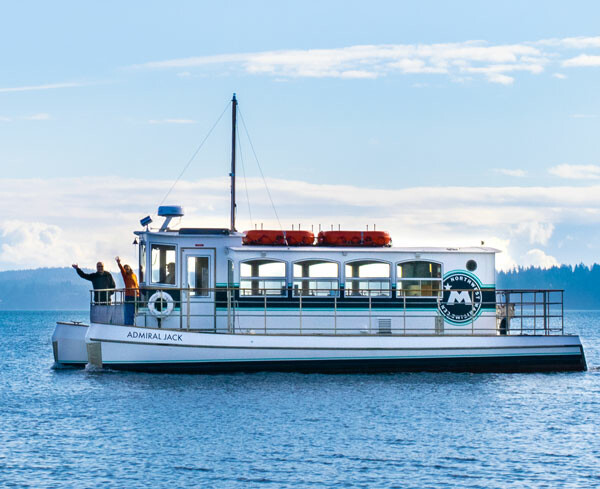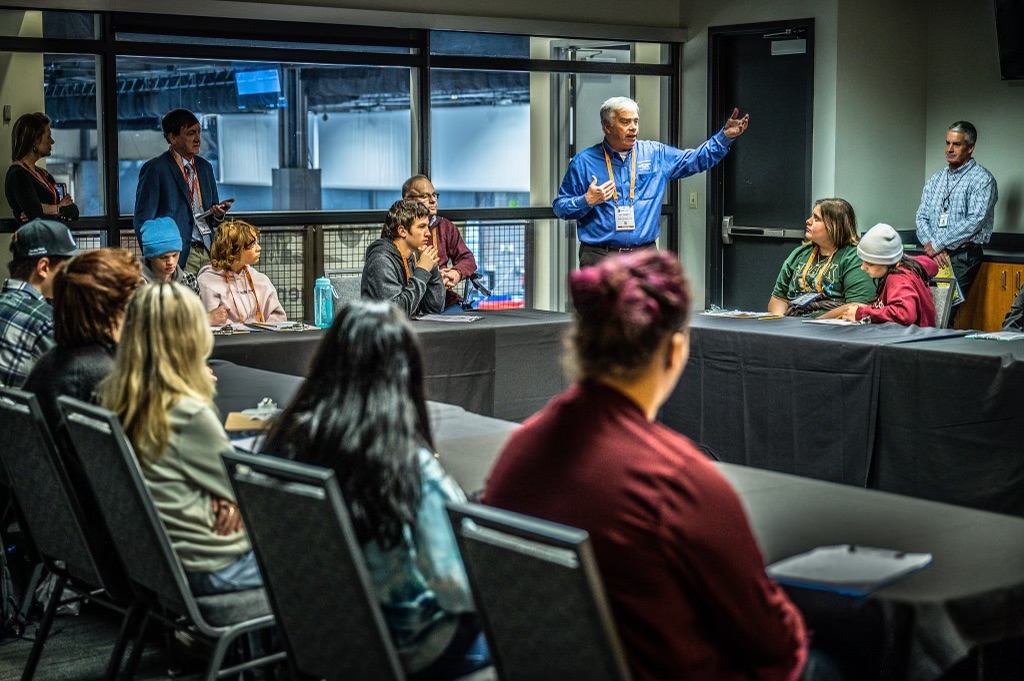For young people thinking about careers, and a maritime industry scrambling to build its future workforce, Seattle was a good place to meet during Pacific Marine Expo.
A group of the first 10th grade class from Maritime High School checked out the big Northwest maritime trade show during its Nov. 17-19 run at the Lumen Field Event Center, with more than 400 companies and trade groups exhibiting.
“So many of our customers are here, and they are looking for help,” Bob Callahan, a vice president of Diversified Communications’ commercial marine group and publisher of National Fisherman and WorkBoat, told the students. The commercial fishing industry, marine transportation, shipbuilding and manufacturing, government and research groups were all on the show floor, he said.
“You guys are looking at a great field,” said Callahan. “Every element of what you see at sea will be on the show floor.”
The show lets mariners come to Seattle to check out the latest in technology and industry trends, and talk freely with potential employees along with industry experts, government officials and scientists.
“PME is my best opportunity to speak to my customers when they’re not on the water,” said Ray Giometti, business and operations manager for Fishermen's Terminal at the Port of Seattle. “Feel free to ask about jobs. There is no better opportunity when everyone is in one room.”
“It’s just a gold mine of all the right people in the room,” said Mia Mlemarkov, who has been teaching for 14 years and the last two years at Maritime High School, based at Des Moines, Wash., in the south Seattle suburbs.
The 10th grade students who came to PME already had a year and a half of field experience, along with a class project this year learning about the complicated system of U.S. fishery management.
“We feel they’re ready to go out and talk to people,” said Mlemarkov.
At the Nov. 18 Seattle maritime economic forecast breakfast, Ann Avary, director of the Northwest Marine Manufacturing Technology Center of Excellence, urged industry members to focus on recruiting young people.
“We have to build out a bench,” said Avary. “Volunteer with your local school. Talk about opportunities in maritime.”
New York City’s Harbor School was one model for the Maritime High School, said Jake Beattie, executive director of the Northwest Maritime Center in Port Townsend, Wash.
Movement toward creating the high school goes back to a workforce and training summit hosted by the Port of Seattle commissioners in November 2019. The Maritime High School opened in September 2021 and now has 80 students enrolled toward a goal of 400.
Along with classroom study and field trips, students work on the Admiral Jack, a 40’ former pedestrian ferry and tour boat that serves as a floating classroom. Beattie calls it “half science lab, half deck trainer.”
“There are so many career opportunities,” said Ken Saunders, a maritime educator and consultant who works with the high school. “We definitely have a local focus. But these kids could be on ships going halfway around the world before they’re 25.”








